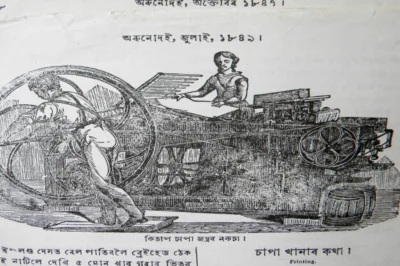Assamese folktales hold a significant place in India’s rich tradition of storytelling, influencing both regional and national literature. Rooted in the history and culture of Assam, these stories are imbued with the state’s distinct landscapes, traditions, and beliefs. Passed down through generations, they have helped preserve Assam’s unique identity while also shaping the broader narrative of Assamese literature. Today, these folk stories of Assam continue to influence modern Indian literature, serving as a bridge between the past and present and offering timeless lessons wrapped in engaging narratives.
The Rich Tradition of Assamese Folktales
Assam’s vibrant cultural heritage is reflected in its folk stories, which often feature a mix of myths, moral lessons, and reflections on human nature. Many Assamese folktales revolve around animals, local deities, supernatural elements, and themes of good versus evil. These stories, told through oral traditions, were not only a source of entertainment but also a way to pass on cultural values, wisdom, and social norms.
Some of the most popular traditional Assamese stories feature the clever fox, the benevolent serpent, or the mischievous demon, all representing elements of Assam’s natural surroundings and human behavior. Such tales have been instrumental in shaping Assam’s cultural identity, making cultural storytelling a key part of its literary and social fabric.
The Role of Folktales in Assamese Literature
Assamese literature has long drawn inspiration from the state’s rich repository of folk stories. Early writers in Assam frequently used these tales as a foundation for their works, preserving the oral tradition by transforming it into written form. The timeless nature of these stories has enabled them to transcend generations and become part of the formal literary canon in Assam.
Renowned Assamese writers like Lakshminath Bezbaroa and Hemchandra Barua integrated Assamese folktales into their work, using them to express broader themes of human experience and moral lessons. This not only helped preserve these tales but also expanded their reach, allowing readers across India to appreciate Assam’s unique literary heritage.
Folktales and Modern Indian Literature
In modern Indian literature, Assamese folktales continue to inspire authors and readers alike. Contemporary writers often blend these traditional stories with modern themes, exploring new ways to present cultural storytelling while retaining the essence of Assam’s folk traditions. This integration of folktales into contemporary narratives provides a fresh perspective, offering insights into Assam’s mythology and cultural heritage in a way that resonates with today’s readers.
Many modern authors are reinterpreting these folk stories of Assam in novels, short stories, and children’s literature. By adapting the themes, characters, and morals of Assam mythology, writers can craft stories that speak to both local and global audiences. These reimaginings keep the spirit of the folktales alive, ensuring that they remain relevant in today’s world.
Conclusion: A Lasting Legacy in Indian Literature
The enduring influence of Assamese folktales on modern Indian literature is a testament to the power of storytelling in preserving culture and heritage. These timeless tales, rich in Assam mythology and folk traditions, continue to shape both regional and national narratives. By integrating the moral lessons, characters, and themes of traditional Assamese stories into contemporary works, writers ensure that Assam’s cultural storytelling remains a vital part of India’s literary evolution, connecting the past with the present in meaningful ways.








Leave a Reply